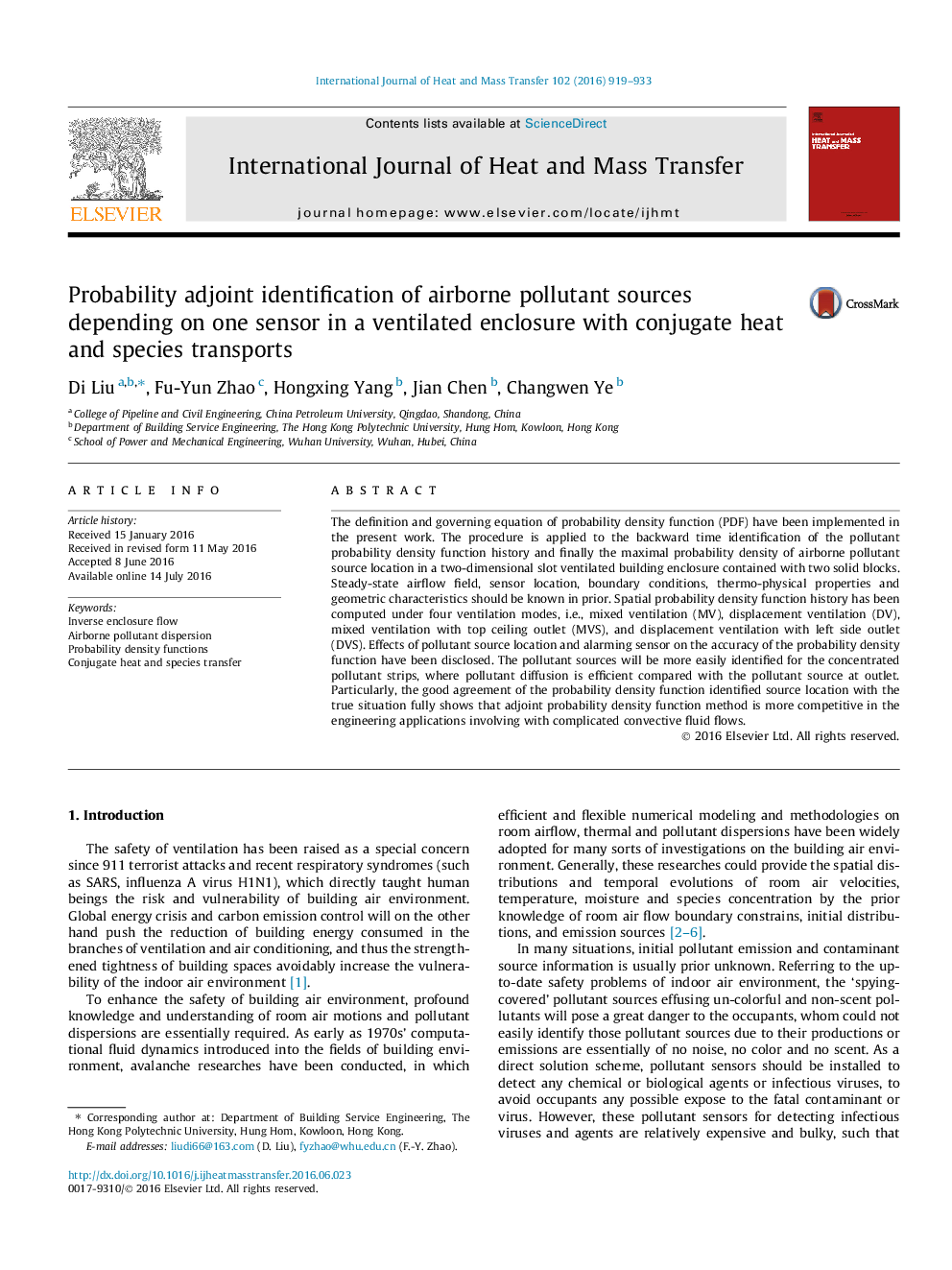| Article ID | Journal | Published Year | Pages | File Type |
|---|---|---|---|---|
| 7055321 | International Journal of Heat and Mass Transfer | 2016 | 15 Pages |
Abstract
The definition and governing equation of probability density function (PDF) have been implemented in the present work. The procedure is applied to the backward time identification of the pollutant probability density function history and finally the maximal probability density of airborne pollutant source location in a two-dimensional slot ventilated building enclosure contained with two solid blocks. Steady-state airflow field, sensor location, boundary conditions, thermo-physical properties and geometric characteristics should be known in prior. Spatial probability density function history has been computed under four ventilation modes, i.e., mixed ventilation (MV), displacement ventilation (DV), mixed ventilation with top ceiling outlet (MVS), and displacement ventilation with left side outlet (DVS). Effects of pollutant source location and alarming sensor on the accuracy of the probability density function have been disclosed. The pollutant sources will be more easily identified for the concentrated pollutant strips, where pollutant diffusion is efficient compared with the pollutant source at outlet. Particularly, the good agreement of the probability density function identified source location with the true situation fully shows that adjoint probability density function method is more competitive in the engineering applications involving with complicated convective fluid flows.
Keywords
Related Topics
Physical Sciences and Engineering
Chemical Engineering
Fluid Flow and Transfer Processes
Authors
Di Liu, Fu-Yun Zhao, Hongxing Yang, Jian Chen, Changwen Ye,
